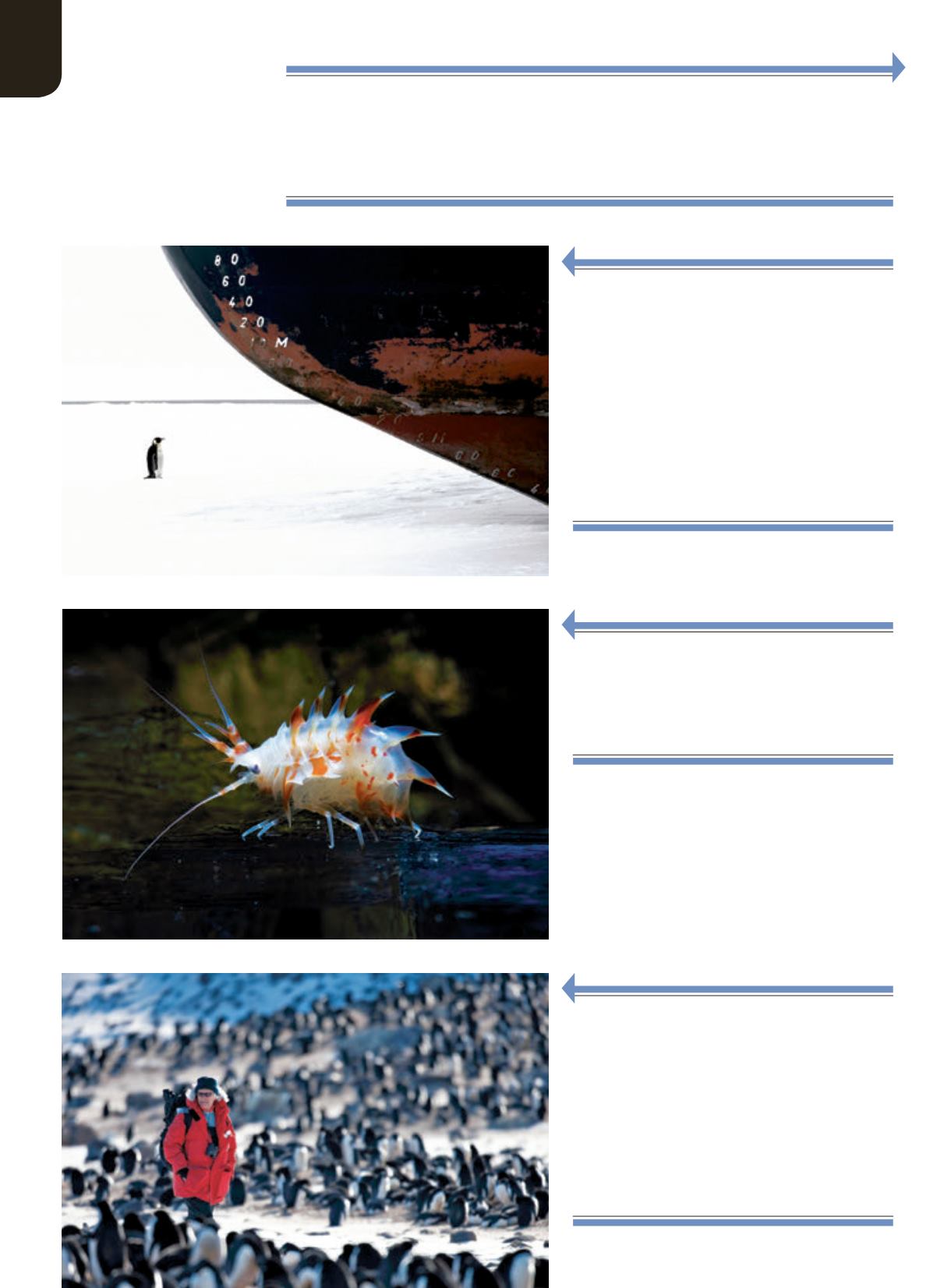

96
|
WINTER 2017
IMAGING
SHOOTER
EMPEROR PENGUIN AND CHICK
Lines of adult emperors slid on their bellies to and from their colony, 6 miles across the sea ice toward the black cliffs. Groups
of juvenile birds, still dressed in their downy suits, also traversed the ice to the water’s edge. Though they still had more than a
month before they could safely take their first plunge, the young birds were already looking out to sea. Parents and chicks know
each other’s unique voices and reunite by calling back and forth when the adults return with food. As we skirted around the base
of the berg, the concert of several thousand voices reflected off the wall of ice behind us, so we sat and listened in stereo.
TIANANMEN SQUARE IN THE SOUTHERN OCEAN:
EMPEROR PENGUIN AND ICEBREAKER
On Oct. 28, 2016, the Commission for the Conservation of Antarctic
Marine Living Resources declared the world’s first large-scale
international marine protected area (MPA) in the Ross Sea, Antarctica.
It is the world’s largest MPA, and it protects the last large intact
marine ecosystem on Earth. The final deal was struck, and when it
was announced the room erupted. People were standing, clapping,
cheering, crying. Nations were literally hugging other nations.
This was not just a massive win for Antarctica. It was not just a
massive win for the conservation of our global oceans, though it was
both. This was also a peace treaty. If we all work together, I believe
it is a blueprint for the future of our oceans.
EPIMERIID AMPHIPOD
Some benthic species adapt to the cold water by growing into
giants, and sea spiders the size of dinner plates walked with bizarre
strides, sometimes taking freeloading passengers along for the ride
on their lobster-red legs. My favorite was a little armored tank, the
epimeriid amphipod, which walked the endless maze of anchor ice.
DAVID AINLEY
David Ainley, Ph.D., more or less started the drive for a Ross Sea
marine protected area. A consummate observational scientist, he
has studied Adélie penguins for more than 40 years. He watches
intently, recognizing subtle patterns, thoroughly researching every
relevant angle and slowly assembling the puzzle pieces to see
more clearly into the world around him.
In the late 1990s, nations were readying their ships in preparation
to expand industrial fishing even farther into Antarctic waters.
Ainley could see the danger, and in 2004 he wrote the paper that
inspired my journey.
AD


















